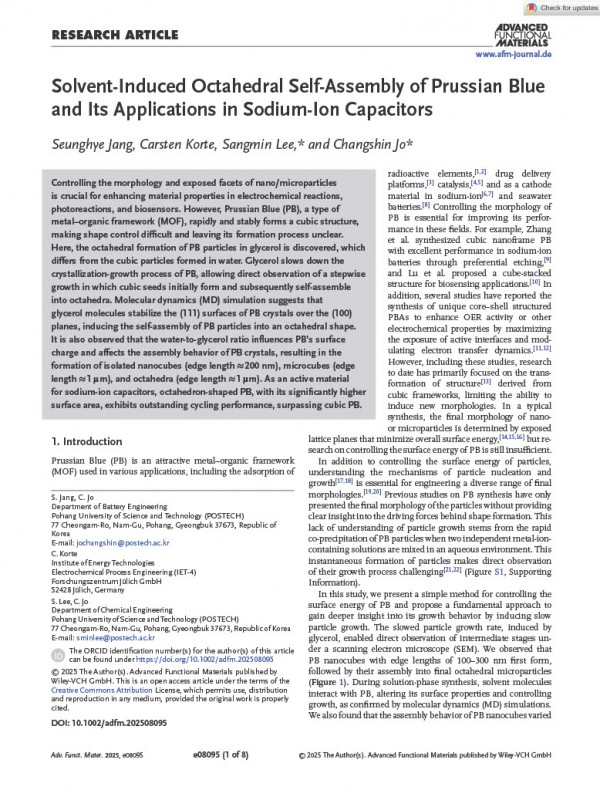NEDL [NEDL] Prof. Changshin Jo: Solvent-Induced Octahedral Self-Assembly of Prussian Blue and Its Applica…
페이지 정보

작성자 최고관리자
댓글 0건 조회 5회 작성일 2025-10-28 15:15
본문
Abstract
Controlling the morphology and exposed facets of nano/microparticles is crucial for enhancing material properties in electrochemical reactions, photoreactions, and biosensors. However, Prussian Blue (PB), a type of metal–organic framework (MOF), rapidly and stably forms a cubic structure, making shape control difficult and leaving its formation process unclear. Here, the octahedral formation of PB particles in glycerol is discovered, which differs from the cubic particles formed in water. Glycerol slows down the crystallization-growth process of PB, allowing direct observation of a stepwise growth in which cubic seeds initially form and subsequently self-assemble into octahedra. Molecular dynamics (MD) simulation suggests that glycerol molecules stabilize the (111) surfaces of PB crystals over the (100) planes, inducing the self-assembly of PB particles into an octahedral shape. It is also observed that the water-to-glycerol ratio influences PB's surface charge and affects the assembly behavior of PB crystals, resulting in the formation of isolated nanocubes (edge length ≈200 nm), microcubes (edge length ≈1 µm), and octahedra (edge length ≈1 µm). As an active material for sodium-ion capacitors, octahedron-shaped PB, with its significantly higher surface area, exhibits outstanding cycling performance, surpassing cubic PB.
관련링크
- 이전글[NEDL] Prof. Changshin Jo: Homogeneous integration of 1D/2D nanomaterials into mesoporous metal oxides via ultrafast condensation-induced self-assembly toward enhanced lithium-ion storage 25.10.28
- 다음글[NEDL] Prof. Changshin Jo: Incorporation of high-valence dopants in primary particles for strain-resistive Co-free high-Ni LiNi0.9Mn0.1O2 cathodes 25.10.28
댓글목록
등록된 댓글이 없습니다.




